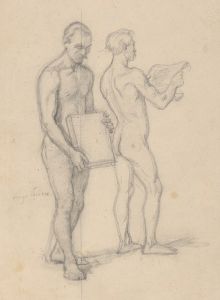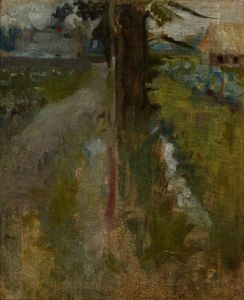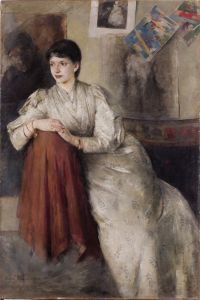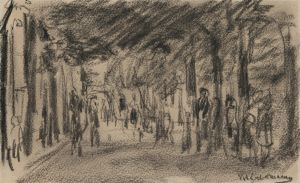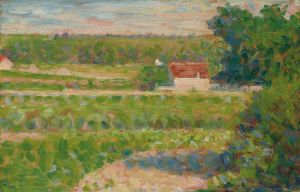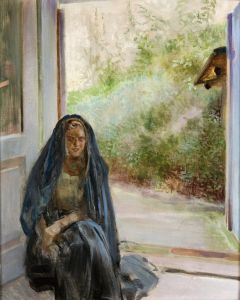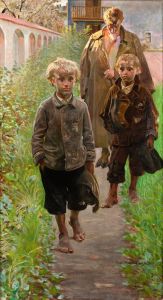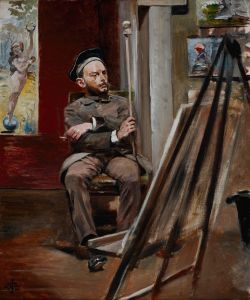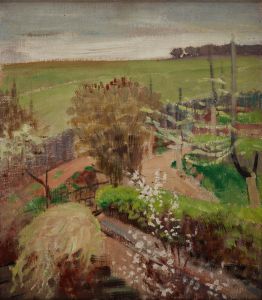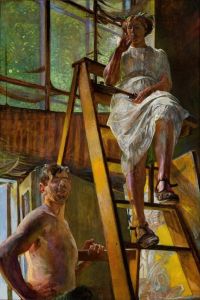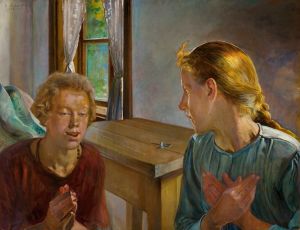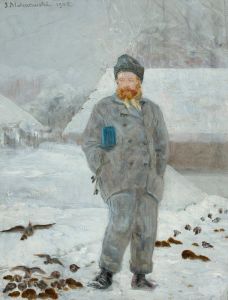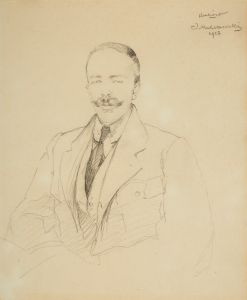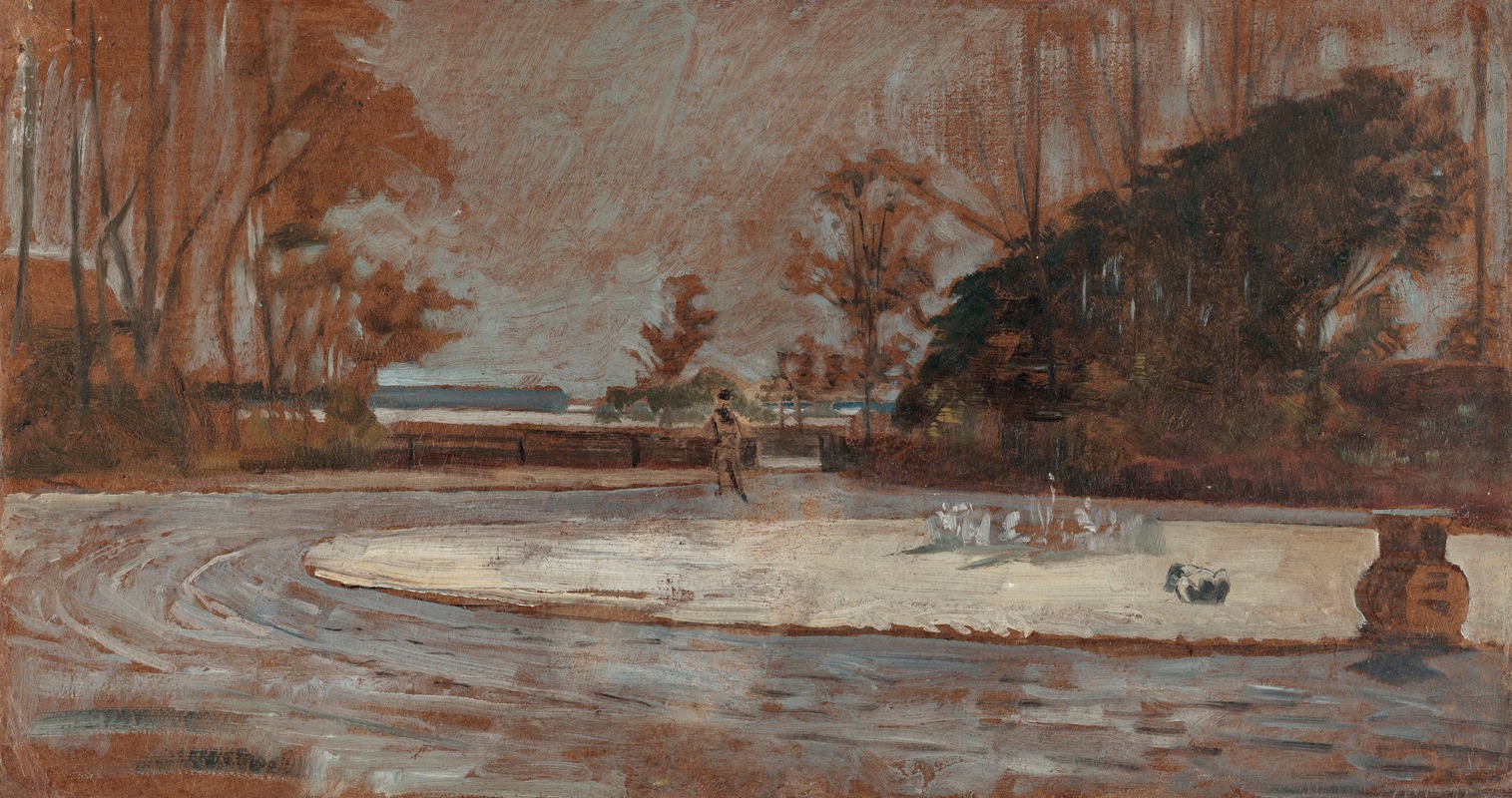
In front of a house in Wielgie
A hand-painted replica of Jacek Malczewski’s masterpiece In front of a house in Wielgie, meticulously crafted by professional artists to capture the true essence of the original. Each piece is created with museum-quality canvas and rare mineral pigments, carefully painted by experienced artists with delicate brushstrokes and rich, layered colors to perfectly recreate the texture of the original artwork. Unlike machine-printed reproductions, this hand-painted version brings the painting to life, infused with the artist’s emotions and skill in every stroke. Whether for personal collection or home decoration, it instantly elevates the artistic atmosphere of any space.
Jacek Malczewski, a prominent Polish painter associated with the Symbolist movement, created the painting "In front of a house in Wielgie." Malczewski was born on July 15, 1854, in Radom, Poland, and is widely recognized for his unique style that often combined elements of Polish folklore, mythology, and national history. His works frequently explore themes of patriotism, identity, and existential inquiry, reflecting the socio-political context of Poland during his lifetime.
"In front of a house in Wielgie" is one of Malczewski's many works that capture the essence of Polish rural life and landscape. While specific details about this particular painting are scarce, it is consistent with Malczewski's broader oeuvre, which often depicted scenes from the Polish countryside, infused with symbolic and allegorical meaning. Wielgie, a village in Poland, provides the setting for this artwork, suggesting a connection to the land and the everyday life of its inhabitants.
Malczewski's paintings are characterized by their vivid colors, meticulous attention to detail, and the incorporation of symbolic elements that invite viewers to delve deeper into the narrative. His works often feature figures in traditional Polish attire, set against the backdrop of the natural landscape, which serves as both a literal and metaphorical stage for the unfolding drama. This approach reflects Malczewski's interest in the interplay between humanity and nature, as well as his commitment to exploring the spiritual and cultural dimensions of Polish identity.
The Symbolist movement, with which Malczewski is associated, emerged in the late 19th century as a reaction against the materialism and rationalism of the time. Symbolist artists sought to express the ineffable and the mystical, often drawing on mythology, dreams, and the subconscious. Malczewski's work is emblematic of this movement, as he frequently employed allegory and symbolism to convey complex ideas and emotions.
Throughout his career, Malczewski remained deeply connected to his Polish roots, and his art reflects the historical and cultural milieu of Poland during a period of political upheaval and national struggle. The late 19th and early 20th centuries were marked by Poland's partitions and the subsequent loss of sovereignty, which fueled a sense of national identity and resistance among Polish artists and intellectuals. Malczewski's paintings often serve as a testament to this spirit of resilience and hope, capturing the essence of the Polish experience through a symbolic lens.
In addition to his thematic concerns, Malczewski's technical prowess and innovative use of color and composition have earned him a lasting place in the canon of Polish art. His ability to blend realism with symbolism, and to imbue everyday scenes with deeper meaning, has made his work both accessible and profound.
While specific information about "In front of a house in Wielgie" may be limited, the painting can be appreciated within the broader context of Malczewski's artistic vision and the Symbolist movement. It stands as a representation of his enduring legacy and his contribution to the cultural and artistic heritage of Poland. Through his art, Malczewski invites viewers to explore the rich tapestry of Polish life and history, offering a window into the soul of a nation.





